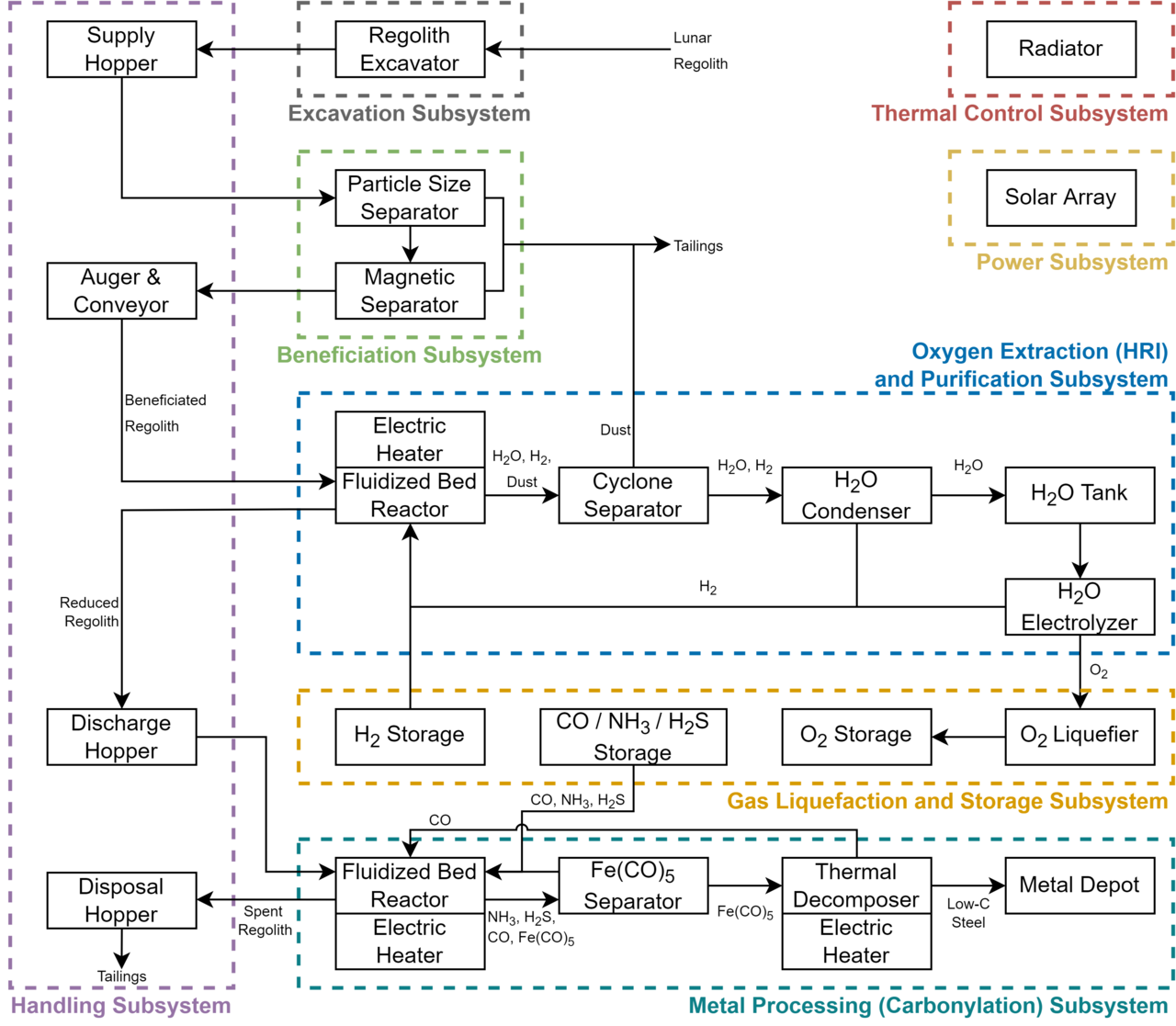ISRULib
ISRULib aims to be an open-source database of ISRU readable and easily-understandable models that can be incorporated into specific analysis and simulation tools, and be used by the entire community to carry out high-level technological trade-offs and preliminary architectural definitions. Our goal is to keep ISRULib alive and constantly updated. If you want to collaborate by including your models in the database or just want to make use of those already available, please visit the Wiki documentation site. ISRULib can be downloaded from its Gitlab project.
Abstract
Holistic and multidisciplinary modeling approaches are key when developing complex new systems to assess their scalability, optimize their architectures, and make high-level pondered decisions from their conception. This is, for instance, the case of space resources or ISRU.
TUM has an extensive legacy of developing tools for the analysis and simulation of human spaceflight systems. The Life Support Trade Off Tool (LiSTOT) combines multi-criteria and Equivalent System Mass (ESM) analyses whereas the Virtual Habitat (V-HAB) is capable of dynamically simulating individual processes and matter and energy flows across systems. Although both tools have been occasionally used to model ISRU components (Guerrero-Gonzalez & Zabel, 2023; Kaschubek et al., 2021), their main focus has been the analysis and simulation of life support systems. Therefore, ISRU models are lacking within these tools.
Individual holistic modeling efforts of different ISRU architectures can be found in the literature (Schreiner, 2015; Hinterman, 2022). However, they must be collected under a single framework to allow their comparison and trade-off under the same set of assumptions.
We are currently developing ISRULib, a component- and system-level library for ISRU architectures, with models covering the entire ISRU chain of water, oxygen, and metal production; from the excavation and processing of planetary regolith to the storage of finalized products. The models estimate mass and power budgets, as well as the performance of the latest technological advances for individual processes, based on analytical parametric calculations, extrapolated experimental results, surrogate models from numerical simulations, and already existing ISRU hardware.

Example: System architecture of a lunar ISRU plant that produces low-carbon steel and O2. The performance and mass and power budgets of the production plant can be estimated using ISRULib components (Source: Guerrero-Gonzalez & Zabel, 2023).
Publications
- Guerrero-Gonzalez, F. J. & Reiss, P. (2023). Holistic system modeling: Towards the design of scalable ISRU architectures. Space Resources Week. [Download poster]
- Guerrero-Gonzalez, F. J. & Zabel, P. (2023). System analysis of an ISRU production plant: Extraction of metals and oxygen from lunar regolith. Acta Astronautica, vol. 203, pp. 187–201. doi:10.1016/j.actaastro.2022.11.050.
- Dietrich, C. F. (2023). ISRULib: Parametric Analytical Modeling of Regolith Excavation and Handling Hardware. Semester thesis. Technical University of Munich.
- Schuster, F. (2023). ISRULib: Parametric Analytical Modeling of H2/O2 Electrolysis, Liquefaction and Cryostorage. Bachelor thesis. Technical University of Munich.
- Guerrero-Gonzalez, F. J. (2021). Analysis of an In-Situ Material Production Concept for Potential Thermal Applications in a Lunar Mission. Master's thesis. Technical University of Munich. [Download manuscript]